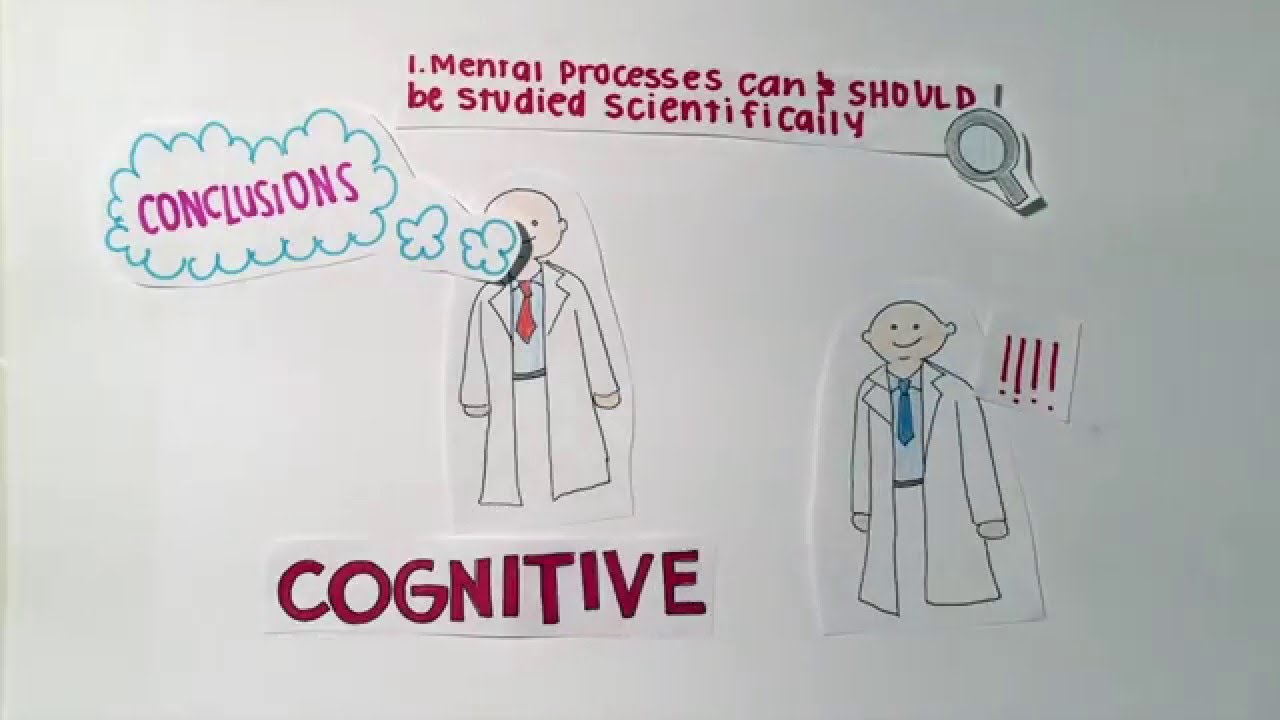The Nine Effects Of Cognitive Psychology That Are Replicated Reliably
Nine cognitive psychology studies passed a rigorous replication test, and each subject completed the test twice. This discipline of psychology investigates a broad range of mental processes, such as how individuals think, utilize language, pay attention to information, and perceive their surroundings.
Author:Suleman ShahReviewer:Han JuDec 06, 202243 Shares1.2K Views

This discipline of psychology investigates a broad range of mental processes, such as how individuals think, utilize language, pay attention to information, and perceive their surroundings.
Many researchers believe that psychology is experiencing a reproducibility problem.
If a result can be replicated, it advances from anecdotal to scientific evidence.
There is an increasing recognition that reproducibility issues exist in psychology.
According to one recent estimate, less than half of cognitive and social psychology results are replicable.
Recent research investigated if this was the case for nine fundamental cognitive psychology results concerning perception, memory, and learning.
According to Rolf Zwaan of Erasmus University Rotterdam and his colleagues, all nine effects were duplicated successfully.
"These findings are encouraging for the discipline of psychology," they stated.

Cognitive psychology Simply Explained
Replicability Of Effects
The researchers tested hundreds of participants on Amazon’s Mechanical Turk survey website.
Whichever cognitive effect they were tested on, each participant completed the test twice (either with the same stimuli or new versions) to see whether it made any difference to their behavior or responses if they already had the experience of the experiment.
All the effects in question were replicated on all occasions, whether on the first or second testing, regardless of whether the specific stimuli – such as the words or pictures involved – were familiar or completely new.
Cognitive psychology studies generally have unclear study aims, rendering recall of earlier experiences useless.
As a result, the impact drop due to recurrent involvement should be near zero.

Cognitive Psychology Effects
Nine preregistered experiments examined the premise that cognitive psychology is resilient primarily to nonnaiveté effects.
The nine cognitive effects that showed robustness were as follows:
The Simon Effect
Participants had to type in the color of an on-screen circle quickly. They responded quicker if the proper keyboard key was next to the process. This "stimulus-response" uniformity facilitates HMI design.
The Flanker Task
Participants quickly pressed the correct keyboard key to identify whether a target stimulus was a vowel or consonant. Instead of distractors connected with distinct responses, participants responded quicker if the target was surrounded by irrelevant, distracting letters (e.g., target vowel surrounded by irrelevant, distracting vowels) (e.g., a vowel surrounded by consonants). The exercise reveals how we can't help but analyze unrelated data.
Motor Priming
Participants had to quickly press the correct keyboard key in reaction to the left or right-facing arrows. Preceding arrows (known as a prime) supplied early information on which direction the target arrows would point. If the heights are told the incorrect way, they hinder performance. Some peaks were "masked" to make them subliminal, which inverted the findings, with wrong-way primes resulting in quick answers. The study reveals that subliminal information may alter our behavior and have the reverse effect when actively noticed.
Spacing Effect
Participants were given hundreds of words in sequence, with some words repeated quickly (known as "massing") and othersrepeated more slowly (known as "spacing"). Participants remembered the spaced words better than the massed words, a fundamental memory phenomenon with crucial learning and research implications.
False Memories
Participants saw related-word sequences. When asked about their recall of the termslater, participants were more likely to indicate a new word with a similar meaning included in the previous list than a new word with a different purpose. This shows how easily we may feel like we've experienced something before when we haven't.
Serial Position Effect
Participants had to recall 20-word lists. Later, they remembered terms around the start and finish of lists better.
Associative Priming
Participants had to identify whether the target words were genuine or not quickly. They placed you target actual words quicker if they were preceded by a similar word (a "prime"), consistent with the theory that activation spreads across networks of relevant information in mind.
Repetition Priming
Participants were given lists of terms, some more frequent than others, and asked to determine whether each word was genuine or not as quickly as possible. Lists were repeated. Short-term memory (based on current encounters) and long-term memory (based on previous meetings) were shown to interact in an intriguing way (based on how common the word is).
Shape Simulation
The participants have presented pairings of phrases and visuals. They had to identify the thing in each image from the previous text. Participants were faster to reply correctly to picture-sentence matches when the object's orientation was comparable – for example, if the text "The ranger observed the eagle in the sky" was followed by an image of a soaring eagle instead of a sitting eagle. This study reveals how we naturally visualize phrases we read.
Conclusion
Positive results are optimistic for cognitive psychology since more memory and perception research is being done online through Amazon Mechanical Turk and other survey platforms.
These psychological phenomena held up when the same subjects were evaluated again, showing they represent basic, unchanging components of how our brains operate.
“These tasks are so limiting that they capture contextual variation and recent relevant experiences to provide highly repeatable effects,” the researchers stated.

Suleman Shah
Author
Suleman Shah is a researcher and freelance writer. As a researcher, he has worked with MNS University of Agriculture, Multan (Pakistan) and Texas A & M University (USA). He regularly writes science articles and blogs for science news website immersse.com and open access publishers OA Publishing London and Scientific Times. He loves to keep himself updated on scientific developments and convert these developments into everyday language to update the readers about the developments in the scientific era. His primary research focus is Plant sciences, and he contributed to this field by publishing his research in scientific journals and presenting his work at many Conferences.
Shah graduated from the University of Agriculture Faisalabad (Pakistan) and started his professional carrier with Jaffer Agro Services and later with the Agriculture Department of the Government of Pakistan. His research interest compelled and attracted him to proceed with his carrier in Plant sciences research. So, he started his Ph.D. in Soil Science at MNS University of Agriculture Multan (Pakistan). Later, he started working as a visiting scholar with Texas A&M University (USA).
Shah’s experience with big Open Excess publishers like Springers, Frontiers, MDPI, etc., testified to his belief in Open Access as a barrier-removing mechanism between researchers and the readers of their research. Shah believes that Open Access is revolutionizing the publication process and benefitting research in all fields.

Han Ju
Reviewer
Hello! I'm Han Ju, the heart behind World Wide Journals. My life is a unique tapestry woven from the threads of news, spirituality, and science, enriched by melodies from my guitar. Raised amidst tales of the ancient and the arcane, I developed a keen eye for the stories that truly matter. Through my work, I seek to bridge the seen with the unseen, marrying the rigor of science with the depth of spirituality.
Each article at World Wide Journals is a piece of this ongoing quest, blending analysis with personal reflection. Whether exploring quantum frontiers or strumming chords under the stars, my aim is to inspire and provoke thought, inviting you into a world where every discovery is a note in the grand symphony of existence.
Welcome aboard this journey of insight and exploration, where curiosity leads and music guides.
Latest Articles
Popular Articles